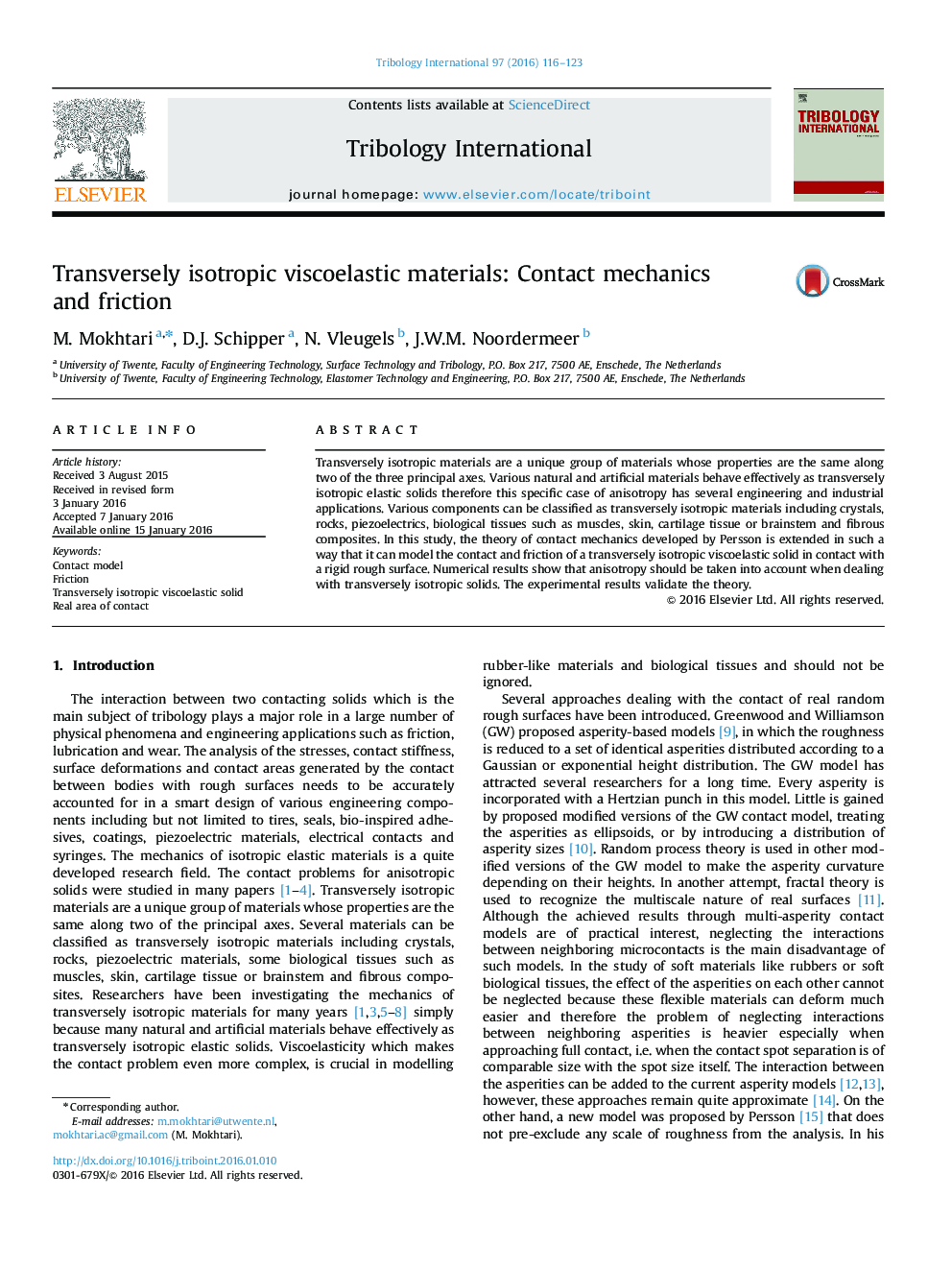| Article ID | Journal | Published Year | Pages | File Type |
|---|---|---|---|---|
| 614310 | Tribology International | 2016 | 8 Pages |
Abstract
Transversely isotropic materials are a unique group of materials whose properties are the same along two of the three principal axes. Various natural and artificial materials behave effectively as transversely isotropic elastic solids therefore this specific case of anisotropy has several engineering and industrial applications. Various components can be classified as transversely isotropic materials including crystals, rocks, piezoelectrics, biological tissues such as muscles, skin, cartilage tissue or brainstem and fibrous composites. In this study, the theory of contact mechanics developed by Persson is extended in such a way that it can model the contact and friction of a transversely isotropic viscoelastic solid in contact with a rigid rough surface. Numerical results show that anisotropy should be taken into account when dealing with transversely isotropic solids. The experimental results validate the theory.
Related Topics
Physical Sciences and Engineering
Chemical Engineering
Colloid and Surface Chemistry
Authors
M. Mokhtari, D.J. Schipper, N. Vleugels, J.W.M. Noordermeer,
